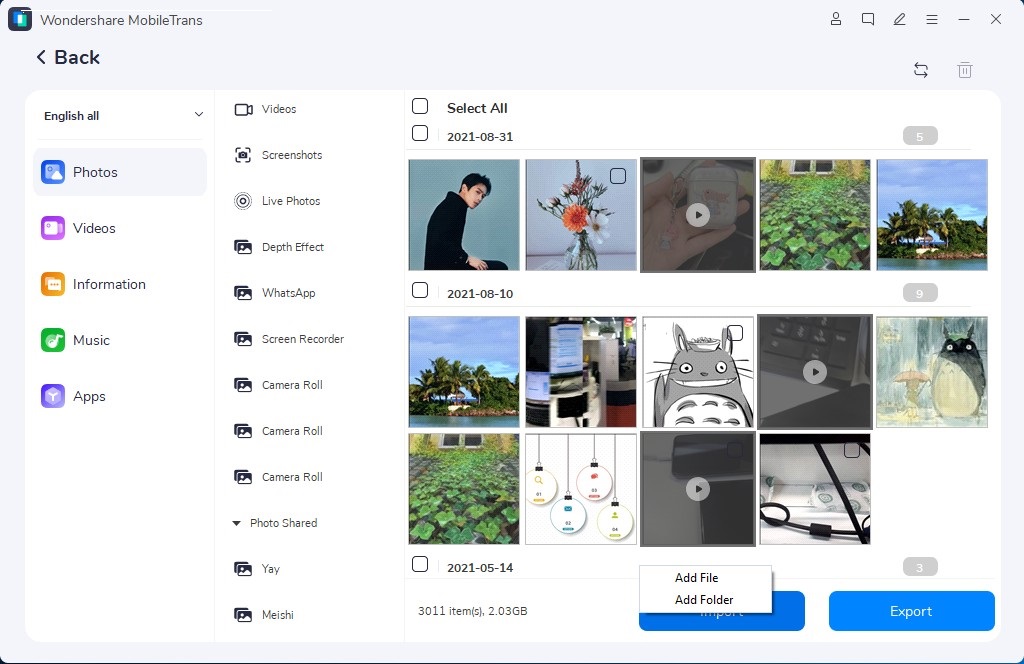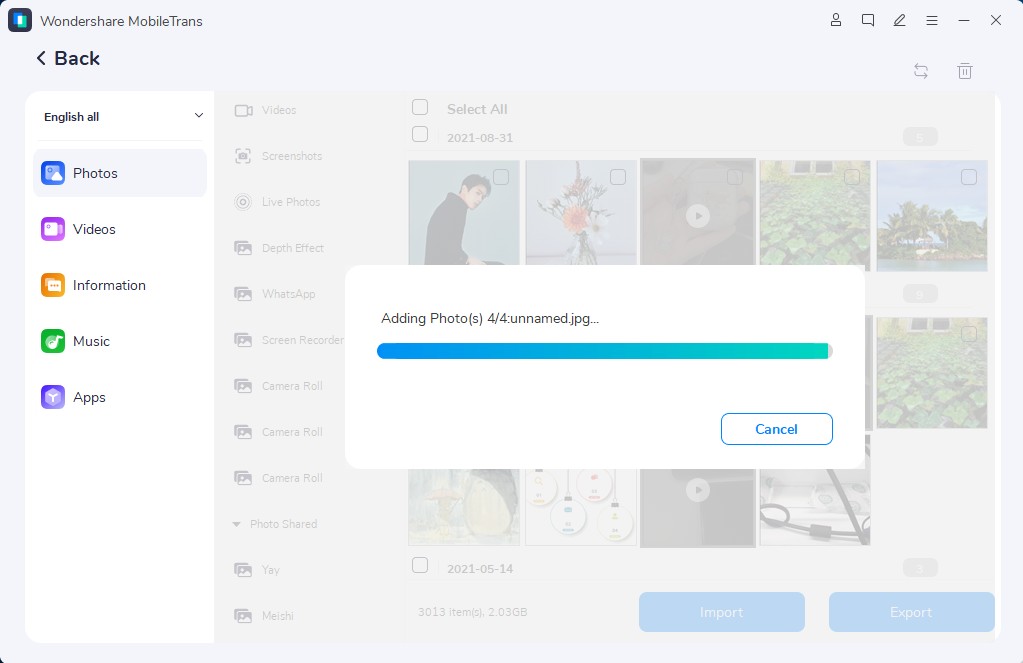While sharing files between iPhones with AirDrop is one thing, sending files from your Mac PC to your iPhone via AirDrop is another story. Like you, many users struggle to AirDrop files from a Mac PC to their iPhone for many reasons ranging from compatibility issues and network settings to an outdated software system and device out of range.
You may be asking: how do I AirDrop from Mac to iPhone?
In this guide, you’ll learn how to AirDrop files from your Mac to your iPhone and from your iPhone to your Mac using AirDrop. You’ll also discover possible reasons why AirDrop is not working on your MacBook and quick ways to fix the problem.
In this article
Can you AirDrop from Mac to iPhone?
Yes, you can AirDrop files from Mac to iPhone. AirDrop is Apple’s built-in file transfer feature that allows users to transfer and receive different types of files including videos, photos, documents, websites, and map locations between Apple devices.
So, if you have files on your Mac that you’d like to transfer to your iPhone, you can use AirDrop transfer as long as both devices are using compatible versions of macOS and iOS.
AirDrop enables file transfer from Mac to iPhone using Wi-Fi and Bluetooth, so you don’t need an internet connection. When enabled, AirDrop creates a direct peer-to-peer Wi-Fi connection using the Wi-Fi radios on your MacBook and iPhone.
This connection allows users to transfer and receive files wirelessly from the source and target devices, and you don’t have to worry about data loss or theft from hackers because AirDrop transfer from Mac to iPhone is encrypted using TLS (Transport Layer Security) encryption.
Next, let’s discuss how to AirDrop from MacBook to iPhone.
How Can I AirDrop from Mac to iPhone
There are two ways to AirDrop files from your MacBook to your iPhone. You can access AirDrop via the desktop or through Finder. We’ll cover both methods, so don’t worry, but before we go on, ensure to turn on Bluetooth and Wi-Fi on both devices.
1. How to AirDrop from MacBook to iPhone From Desktop
- Control-click on the file or item you want to AirDrop from the Mac to your iPhone and Choose Share from the pop-up menu.

(Credit: apple inc.)
- Choose AirDrop from the list of sharing options displayed and wait till AirDrop discovers Nearby devices or contacts to send to. Choose your iPhone Name and Accept the file transfer notification on your iPhone.

2. How to AirDrop from Mac to iPhone via Finder
- Open a Finder window and select AirDrop from the Finder Sidebar. If you don’t see the sidebar, press Control-Command-S.

- You should see your iPhone name pop up. Next, find the file you want to transfer and drag the item to the iPhone or device name.
How to AirDrop from iPhone to Mac?
Sending files from your iPhone to your Mac via AirDrop is very easy. If you haven’t done this before or you aren’t quite sure how to go about it, follow these steps to AirDrop from your iPhone to a Mac PC:
- Turn on AirDrop Everyone and ensure your Bluetooth and Wi-Fi are also enabled. Also, turn off mobile or personal hotspots. Do this for both devices.

- Go to the file you want to send from your iPhone. You can select multiple files at once if you want to send more than one item.
- Next, click Share at the bottom of the screen and select AirDrop from the list of sharing options displayed on the screen.

- Wait for AirDrop to display the Nearby options to send to and select your MacBook.

- Next, click Accept on your MacBook when the AirDrop notification drops. Wait till the transfer is complete and view your files on your MacBook.

Import Data from Mac to iPhone Without AirDrop
In days when AirDrop on Mac isn’t available or not working to send files between your iPhone and Mac PC or any other smart device, there is a suitable alternative that sends data and files just as quickly as AirDrop.
We recommend you Wondershare MobileTrans – Phone Transfer: the best method to AirDrop files from Mac and Windows PCs to iPhone and Android phones in one click.
MobileTrans is a user-friendly and swift File Transfer tool that allows users to send over 18 types of files between Apple devices and between Apple and Android devices too.
MobileTrans is compatible with all types of PCs including computers running the latest version of Windows OS and macOS.
Wondershare MobileTrans
Transfer Between Mac and iPhone Easily
- • No data loss. No data leaks.
- • Support various data, including files, photos, videos, apps, contacts, etc.
- • Compatible with over 6,000 types of devices acorss Android and iOS.

 4.5/5 Excellent
4.5/5 ExcellentOnce you download and install MobileTrans on your PC, follow these steps to send files from your Mac to your iPhone without AirDrop:
- Launch MobileTrans on your PC and select Phone Transfer mode from the MobileTrans home interface. Then click Import to Phone.

- Next. Connect your phone to the MacBook using a compatible Lightning/USB cable and wait for MobileTrans to detect the device. You must unlock your iPhone to allow MobileTrans to detect it.
- Select the files you want to send from your Mac to your iPhone and select Import at the bottom of the screen.

- Wait for the transfer to be completed and unplug your iPhone from the PC.

You should have your files on your iPhone now. If you want to also AirDrop files from your iPhone to your MacBook, you can use MobileTrans by following the same steps as highlighted above. You just have to select Export to PC from the MobileTrans dashboard.
Why Can't I AirDrop from Mac to iPhone?
If your AirDrop is not working for Mac-to-iPhone transfer, here are possible reasons Mac to iPhone AirDrop is not working:
- Bluetooth/Wi-Fi is Turned off
AirDrop enables wireless transfer through a secure Bluetooth and Wi-Fi connection. So, if your Bluetooth or Wi-Fi is off, AirDrop will not recognize any nearby devices. Before using AirDrop on your Mac, ensure you turn on Wi-Fi and Bluetooth on the sending and receiving device.
- Your macOS or iOS is Obsolete
You can AirDrop files from your Mac to an iPhone but both devices have to be running compatible operating systems, usually the latest versions of both. If the macOS version on your MacBook is outdated, or if the iOS version on your iPhone needs an update, AirDrop from Mac to iPhone may not work. You should know that for AirDrop to work on your iPhone, your device must be running iOS 7 or later.
- A Third-Party App is Interfering
Since AirDrop relies on Wi-Fi and Bluetooth connection to send files, you may experience problems using the file transfer feature if you are running another app that’s using your device’s Bluetooth or Wi-Fi. For instance, if you are connected to Wi-Fi or using another File Transfer App like the Samsung Smart Switch, AirDrop on Mac will not see your iPhone.
- The Device Battery is Low
If your MacBook battery is low and you are trying to send a large file using AirDrop, the file transfer may slow down and even halt temporarily to save your device battery. It’s best to charge both devices or plug them in before transferring files via Airdrop from your Mac to your iPhone.
- AirDrop Setting is Wrong
Like any other File Transfer feature, AirDrop has different settings that you can switch to aid File Transfer.
Contact Only Setting allows you to only send files to saved contacts on your MacBook or iCloud. Receiving Off Setting prevents anyone from sharing any file with you via AirDrop and Everyone Setting allows you to send and receive files to and from any device via AirDrop.
If you set AirDrop on Receiving Off on your iPhone, you can’t receive files from your MacBook and if you set AirDrop on Contacts Only, you won’t be able to send files to your iPhone if the contact isn’t saved on your MacBook. So, always check your AirDrop settings.
- The device is out of range
Apple AirDrop can send files between devices that are less than 30 feet apart. If your iPhone is far away from your Mac, you can’t AirDrop files from Mac to your iPhone.
- Your iPhone is Locked
By default, Apple devices can’t send or receive files if the device is locked. So, unlock your iPhone and Mac and try again.
- Personal Hotspot is Enabled
Since AirDrop requires a Wi-Fi connection to allow File Transfer, AirDrop from Mac to iPhone will not work if a personal hotspot is enabled on either device because hotspot and Wi-Fi can’t work simultaneously.
Final Words
In summary, sending files from your Mac PC to your iPhone is an easy task you can complete in less than 5 steps and the same goes for sending files from your iPhone to your MacBook. As long as the hotspot is off and Wi-Fi and Bluetooth are enabled, AirDrop file transfer will go smoothly between Apple Devices.
If you run into problems using AirDrop on your MacBook, check the problems highlighted in this article and troubleshoot using the quick fixes revealed under each problem. In cases where AirDrop is not an option, you can try other alternatives to AirDrop on Mac such as MobileTrans export to iPhone software tool.

 4.5/5 Excellent
4.5/5 ExcellentFAQ
-
1. Can you AirDrop to Windows PC?
You can’t AirDrop to a Windows PC because AirDrop is a feature available for only Apple devices. However, some alternatives work just like AirDrop to transfer files from your smartphone to a Windows PC. You can use MobileTrans Export to PC, Google Drive, Email, etc. -
2. What type of files can you AirDrop from Mac to iPhone?
By default, AirDrop allows you to transfer different types of files from Mac to iPhone. You can send photos, videos, music, PDFs, folders, documents, map locations, web Image names, and so much more using AirDrop. You also don’t have any limit to file size when sharing files between your iPhone and Mac PC, which means you can send movies, ZIP files, and other large files via AirDrop.






